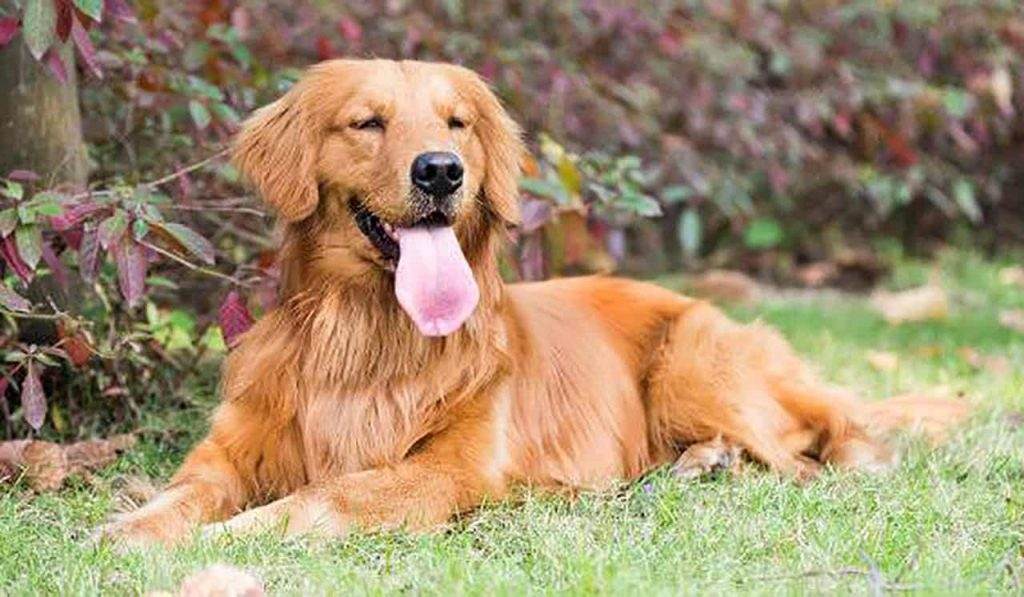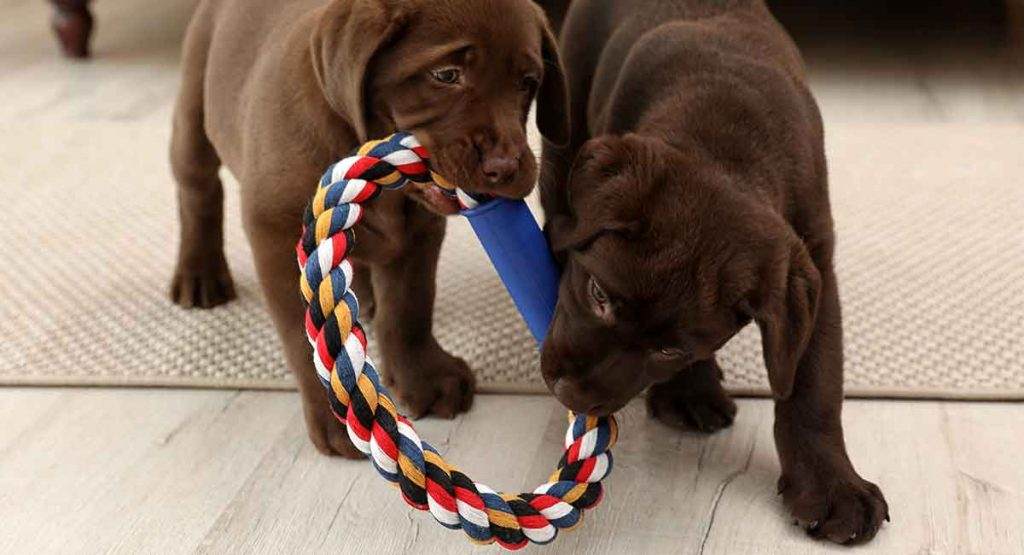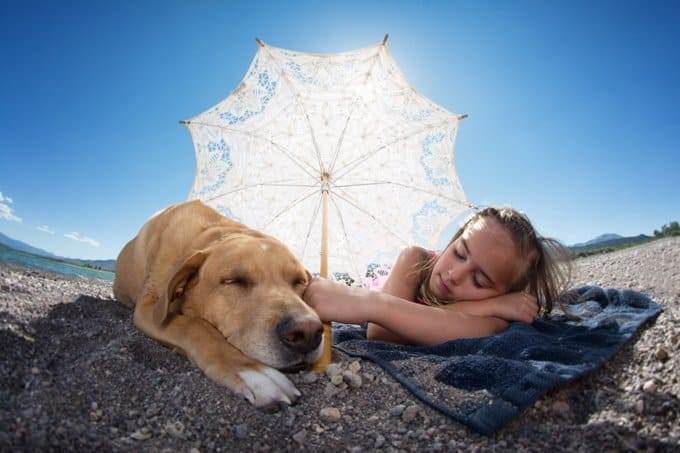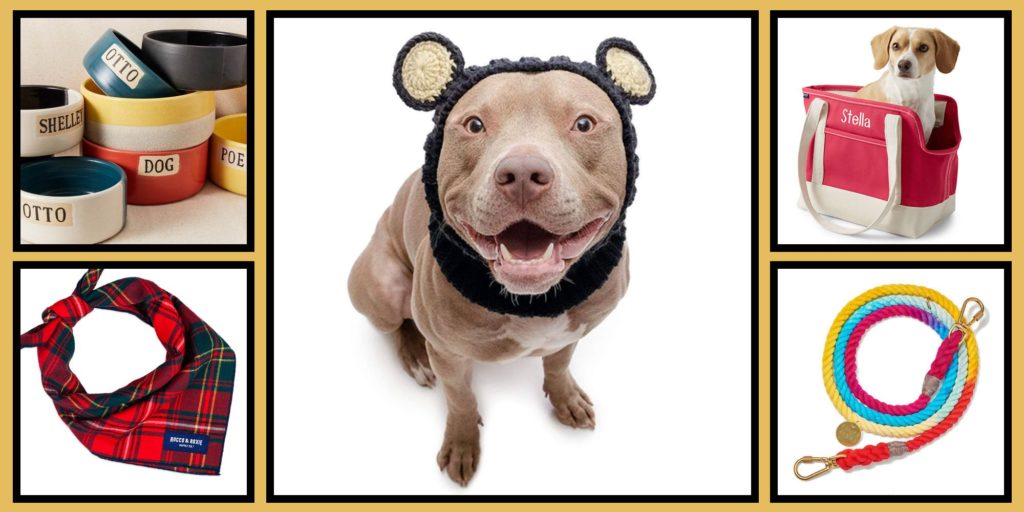Labradors are widely considered to be ideal pets for sole owners as well as families. The reason for this is that over the years, Labs have gained quite the reputation for being intelligent, quick-witted, high-spirited pets that bring scores of benefits along with them to brighten up their owner’s life. Furthermore, Labradors are considered to be very affectionate towards their owners.
Even from a very young age, Labs tend to shower their owners with affection in several unusual ways. On that account, the owner needs to know when his Labrador is showering him with affection so that he can show equivalent amounts of affection to his Lab too.
Body Language Signs
Here are a few body language signs a dog owner can look out for in his Lab to see if it is showering him with love and affection or not:
- Wagging their tail: When a Labrador wags his tail, it is often interpreted as a sign of happiness. However, there is so much more to tail-wagging than just happiness. For instance, when a Labrador stands in an alert position with his tail wagging at an upright position, it exhibits excitement and playful behavior. When there’s eccentric wagging (where a Labrador’s tail wags in a fan-like motion) and a Lab’s butt sways, it is a classic sign of love.
- Eye contact: Few Lab owners believe that a dog’s stare does not interpret anything. Also, most owners reckon that their Labrador’s only stare at them to indicate a desire to want something. Be that as it may, owners need to know that when their Labrador keeps staring at them all googly-eyed, it implies a shower of affection.
- Snuggling: Every so often, Labradors tend to draw their busy owners close by trying to snuggle with them. This displays a cozy form of body language that is exhibited by Labradors to show their owners warmth and affection. It is a well-known fact that Labradors don’t seek attention from just anyone; they seek attention solely from the person they love. Hence, the next time you see your Labrador come close for a snuggle, be sure to shower him with lots of love.
- Sleeping next to you: It is common practice for Labradors to sleep next to their owners. Though Labradors make friendly and affectionate pets, they tend to not trust everyone. Seeing as the act of sleeping gets them in a vulnerable position, they only sleep next to the people they trust. Hence, if your Labrador sleeps next to you, you are indeed very special to him.
- Yawns when you yawn: Labradors are considered to be intelligent animals for they effortlessly pick up physiological responses from their owners and modify their responses accordingly. Word has it that empathetic people tend to catch another person’s yawn quite easily. So, when a Labrador catches a yawn from its owner, it is considered a sign of empathetic behavior too. Generally, Lab owners are well-advised to spend more time with their Labs to get their Lab to adapt to the same habits they have.
- Following: Everyone needs to feel special and be followed around by a special someone. In similar circumstances, Lab owners love it when their Labrador retriever is being clingy and follows them around the house. Labradors also tend to feel the same way about their owners and accompany their owners almost everywhere they go. This is an additional gesture Labradors exhibit to display their love for their owners.
- Leaning: Labradors often tend to lean into their owner while they’re standing, sitting, or lying down. In some cases, this behavior is interpreted as a sign of insecurity, fear, anxiety, a longing to do something or go somewhere, or even a serious medical condition (only when a Lab does it suddenly). Be that as it may, the most common reason a Lab does this is to show affection. Though there may be quite a few owners who find this behavior annoying at times, it is just another unusual gesture Labradors display to show their love and affection.
- Whining when you leave: Lab owners can’t help but notice a sudden change in their Labrador’s behavior when they are just about to leave for work. The reason for this is that Labradors are dependent on animals and want to spend as much time as they can with their owners. Therefore, they tend to feel sad and start whining and pacing whenever they see their owner getting ready.
- Welcomes you when you return: Returning home is probably the best part of the day for a dog owner as well as their dog. When you come home to a Lab after a long tiring day, there is no denying the fact that you will be greeted by the sight of a warm, friendly, excited Labrador running around the house and wagging his tail. In some cases, Labradors also tend to bark in the house to announce their excitement of your arrival.
- Seeks affection after a meal: Labrador retrievers have a habit of licking their owners after a meal. This behavior may seem a bit confusing to dog owners for they may eventually shrug it off thinking that their Labrador is just asking them for more food. That, however, is not the case. Labradors tend to lick their owners as a gesture to thank their owners for the food.
- Licking: Licking is a sign associated with several behaviors. It can either indicate a medical condition or a cleaning technique Labs opt to clean themselves. However, when Labradors lick their owners, it is considered to be a sign of affection and love. More often than not, licking is a method used by Labradors to kiss their owners.
- Playful posture: Among the most affectionate dog postures is the play bow. The play bow is when a Labrador is down on his elbows with his butt in the air and his tail wagging freely and vigorously. It is a posture an excited Labrador uses to invite their human to play.
- Toy sharing: Labradors tend to greet their owners at the door with an object it is most fond of. In the circumstance that a Labrador brings his owner a ball or a Frisbee to play fetch with, it means that he just wants to play with his owner. But, if a Lab gives you his favorite blanket or plushy toy, it means that he is willing to share his prized possession with you because he loves you and trusts you deeply.
- Wiggling eyebrows: Labradors tend to be more facially expressive when they are around their owners because they use it as a communication tool to imply a gesture. The best intriguing gesture by far is when they wiggle their eyebrows. However, this gesture is confusing to most dog owners as they don’t quite understand what it means. To help humans understand better, research has proved that since Labradors can’t talk, they tend to show their owners affection and love by wiggling their eyebrows.
- Jumping: Jumping is generally associated with negative behavior. Though it is considered rude for a Labrador to jump on a person, it is the purpose behind the jump that matters. Labradors tend to jump on their owners not only when they are excited, but to also showcase their love and affection for their owner.
- Lying on their backs: Labradors don’t always lie on their back because if they do, they are in a vulnerable position. However, certain exceptions may apply in the case of owners giving their Labs good belly rubs. Besides, this action is also a form of trust as they do not want to display their weakness to anyone else.
- Stealing dirty socks: Stealing an owner’s dirty sock or pantyhose is a common habit among quite a few Labradors. Though this thievery is often regarded as a part of their playful behavior, Labradors steal the owner’s dirty socks as a sign of affection. A Labrador has no better way to display its affection than by stealing a piece of its owner’s clothing with his owner’s scent mixed with it.
- Guarding: When a Labrador senses possible trouble, it immediately displays a defensive or offensive body language to help shield its owner from harm. Since Labradors are known to guard the things or people they love, your Labrador coming to your defense when you are threatened is interpreted as a sign of love.
- Peeing: Topping the list of unconventional ways Labradors show affection is-peeing. Professionals have ascertained that when a Labrador pees in front of you, it is considered a sign of submission. Subsequently, if your Lab wets the floor he is just trying to say that you are my leader and I respect you.
- Sighing: One of the most common techniques Labradors use to communicate with their owner is through their voice. Research has proved that low groans and sighs of Labs are commonly associated with contentment. Therefore, when a Labrador lets out a long sigh to his owner with his eyes half-closed, it means he is enjoying his time and that he loves you.
How to get your Labrador to be more affectionate?
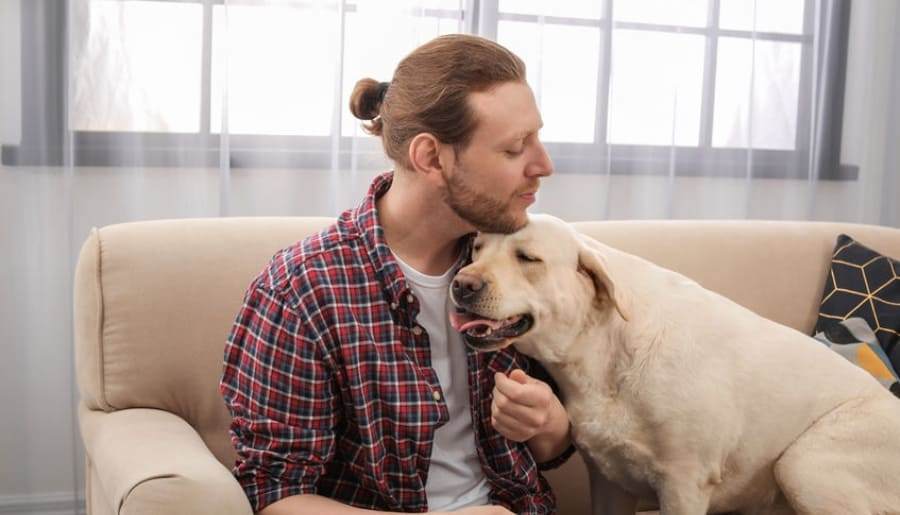
All Labradors have unique personalities and vary in tendencies towards physical affection. When a Labrador is more of an independent dog, it is inevitable for some owners to start craving for additional love from his Lab. To fix this, there are certain methods one can employ to help encourage their dog to be more affectionate. Few methods include:
- Positive reinforcement training: To get his Labrador to be more affectionate, a Lab owner must make sure to reward his Lab with treats every time it’s is on its best behavior and does something right.
- Avoid punishing it: Punishing a Labrador for his bad behavior isn’t going to be of much help as this would only result in a Lab holding resentment towards you. In such cases, positive reinforcement training comes to an owner’s aid to help change the behavior of his Labrador.
- Spend more time with your Labrador: As a responsible dog owner, it becomes one’s duty to shower their Labrador with lots and lots of love and affection. To achieve this, one can engage in an activity with their Labrador like playing, exercising or training.
- Give it more exercise: If a dog owner wants his Labrador to be more physically affectionate, he must make to give his Labrador a considerable amount of exercise daily. According to veterinarians, exercising your Labrador for half an hour to two hours a day can help Labs receive adequate exercise to boost their feelings of happiness and contentment. By doing this, an owner can develop a human-animal bond by not only spending more time with their Labrador, but by also giving it the feeling of love and appreciation from his end.
- Take it to the vet: When a Labrador suddenly stops showing its owner as much affection as they used to, it could be a sign that something is wrong. At moments like this, it is considered best to take the Lab to the vet. By doing so, the owner can not only ascertain whether or not his Lab is suffering from any sort of illness, but can also get expert advice on how to take care of the Labrador and get it to be more affectionate.
- Grooming: Getting messy sure is fun. As children, we’d always love to spend the day outdoors and get ourselves muddy, in hopes that we could always go back home and cleanse ourselves up with a nice hot bath. Labradors are no different. In such an event, Grooming helps to preserve your Labrador’s health as well as its physical appearance. Also, when you groom your Labrador, it will give you plenty of opportunities to bond with your pet.
Conclusion
Labrador retrievers are one of the most lovable companions a family can have. Since these breeds tend to love their owners unconditionally, they do not miss out on a single opportunity to tell their owners that they love them. However, Labs have their strange ways to communicate their love. They use facial expressions, gestures, and body postures to express their feelings to their owners.
Since communication is a two-way street, it becomes an owner’s responsibility to interpret his Lab’s non-verbal language so that he knows how often his Lab expresses its feelings of love and affection towards him. To help owners interact with their Lab better and strengthen the human-animal bond they have, this article gives a summary about the various body signs a Lab owner can look out for in his Labrador to determine whether his Lab is showering him with affection or not and also the various methods one can employ to get a Labrador to be more affectionate.
References
- https://www.tandfonline.com/doi/abs/10.2752/175303711X13045914865385
- https://nottingham-repository.worktribe.com/output/4324615/teenage-dogs-evidence-for-adolescent-phase-conflict-behaviour-short-title-adolescent-behaviour-in-domestic-dogs
Table of Contents

